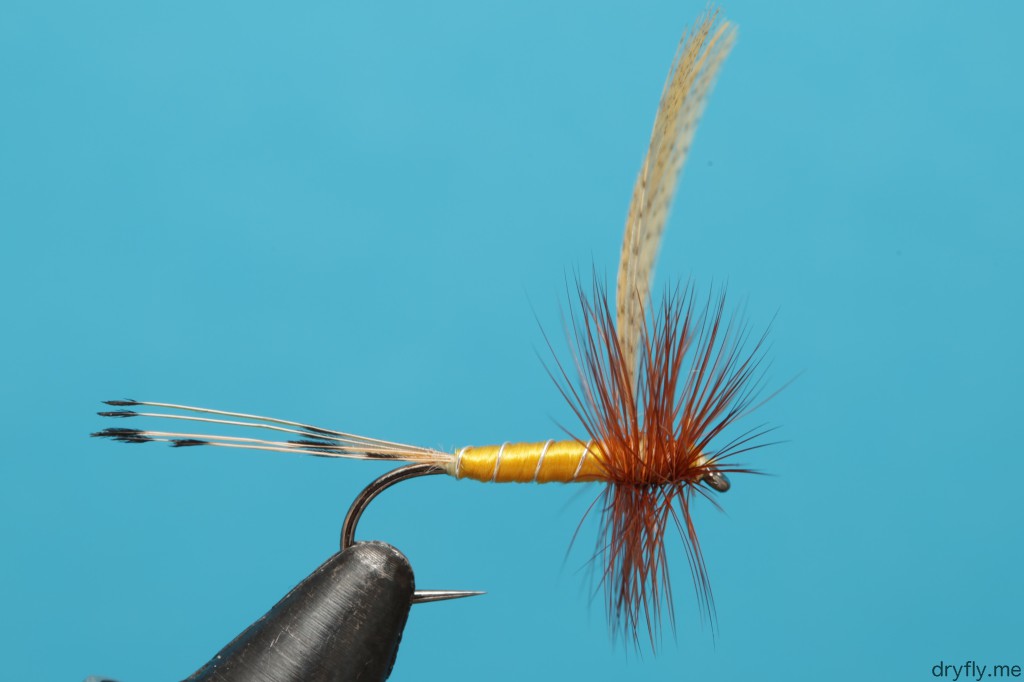 Hook: Allen D103BL #12
Hook: Allen D103BL #12
Thread: Sheer 14/0 Yellow
Tail: Golden Pheasant
Body: UNI-Floss Br.Yellow, UTC Ultra Wire Silver
Wing: Two Mallard Flank feathers
Hackle: Whiting Bronze
For my first fishingtrip to northern Norway I bought a big, bright, yellow Mayfly that, when I got it in my mailbox, was so big I would never think it would actually fish (this was in my first year as a flyfisher). Yesterday I was going through some boxes and found it again: I did fish it, and I did get fish on it, but I had forgotten about it.
This pattern has the big mallard flank wings that can easily spin when throwing, but for shorter casts and in the right hatch this fly will be great to have available!
Two things with this attempt:
- the flosswork in front of the tail – you can see the thread
- the wings should have had a better split to see that there are indeed two mallard feathers tied in
 Two versions with different tails:
Two versions with different tails:
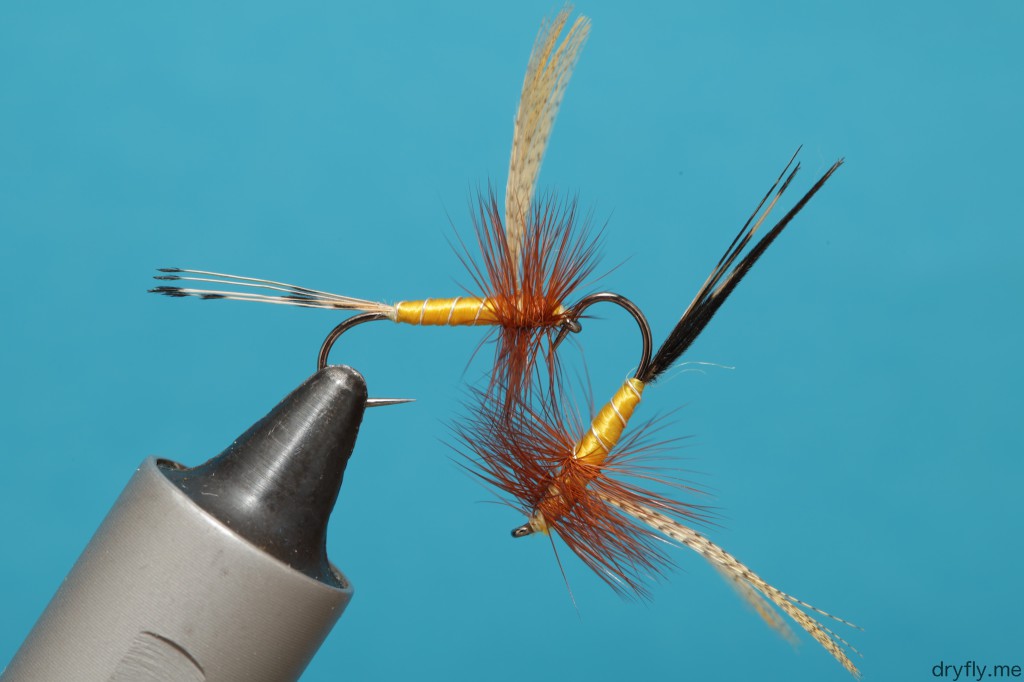
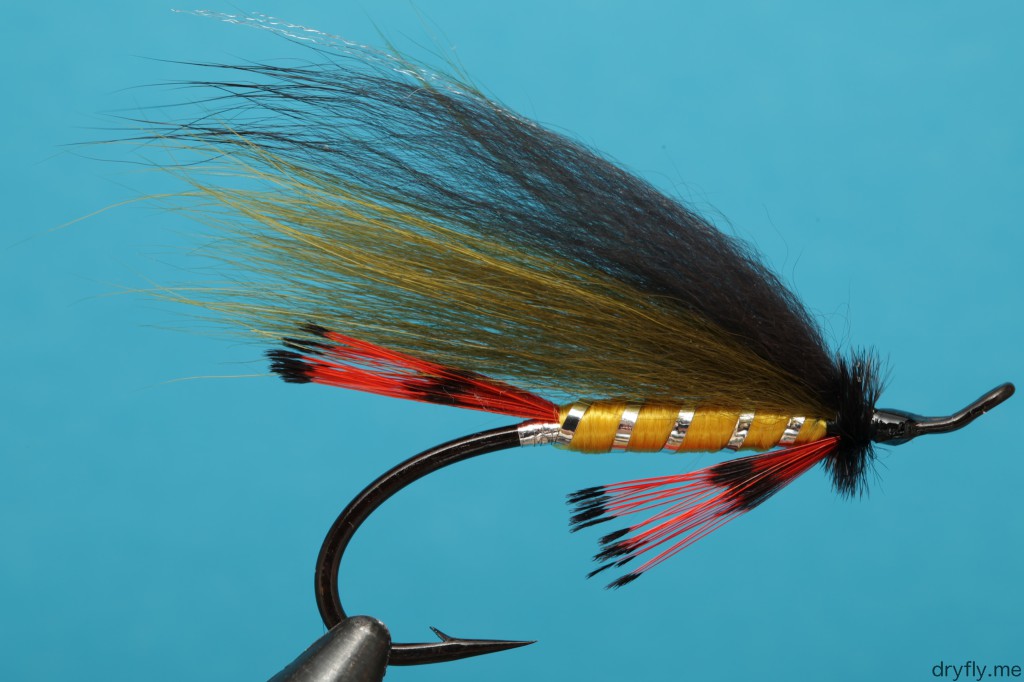
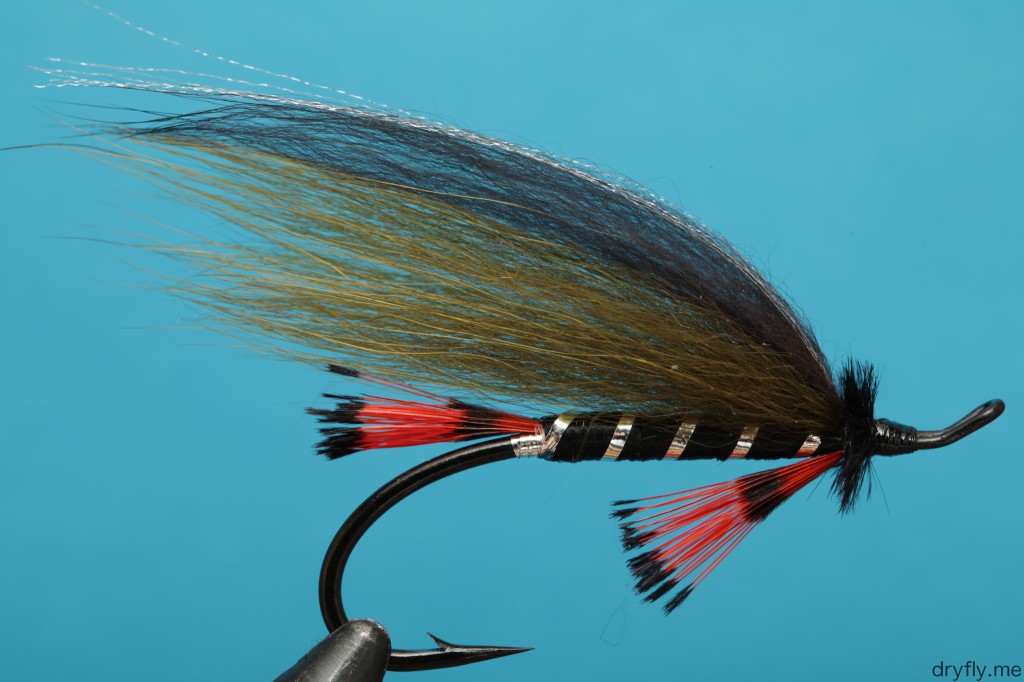




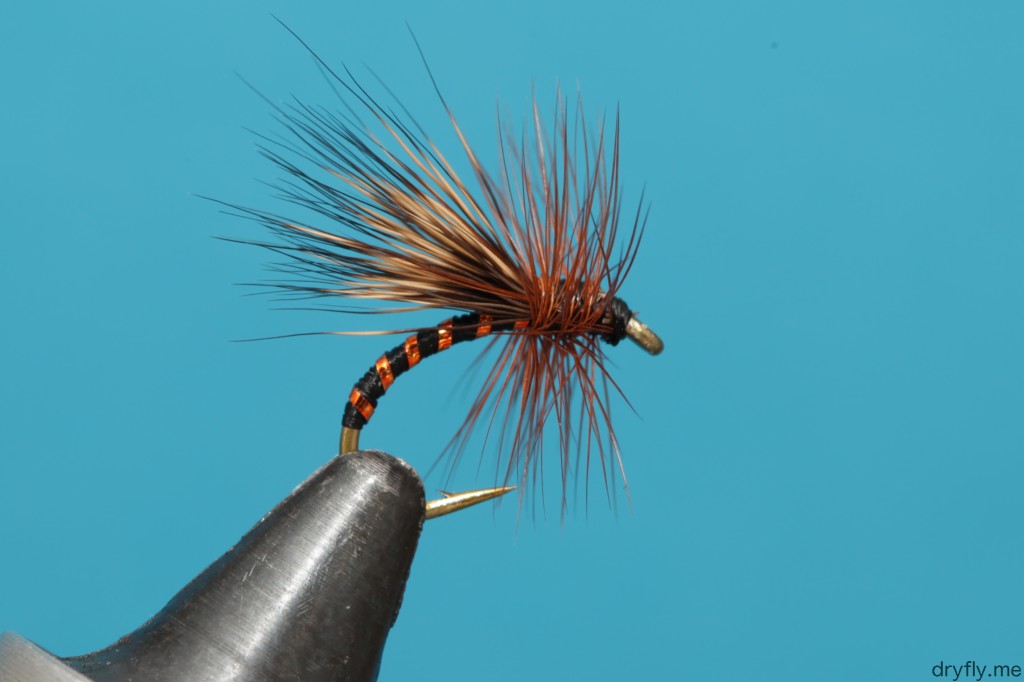
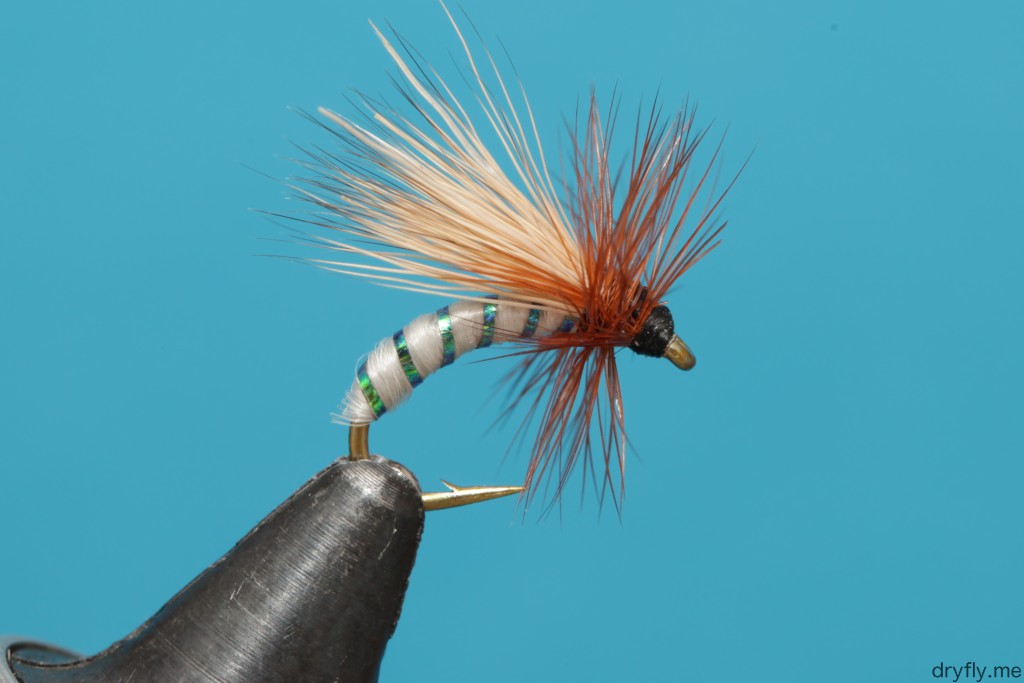

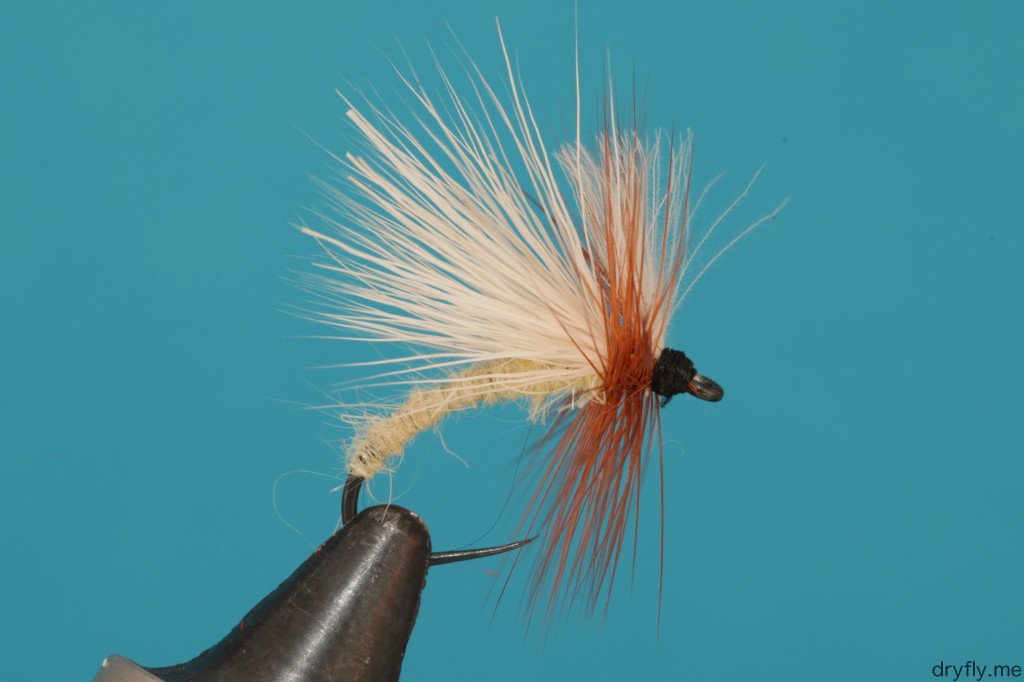
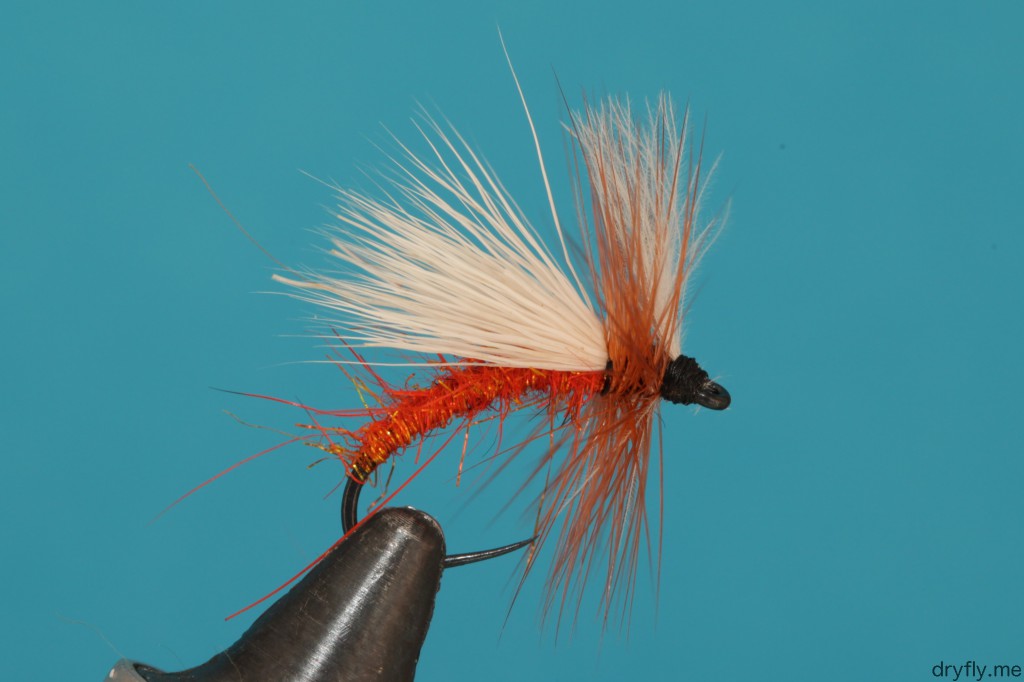


Recent Comments